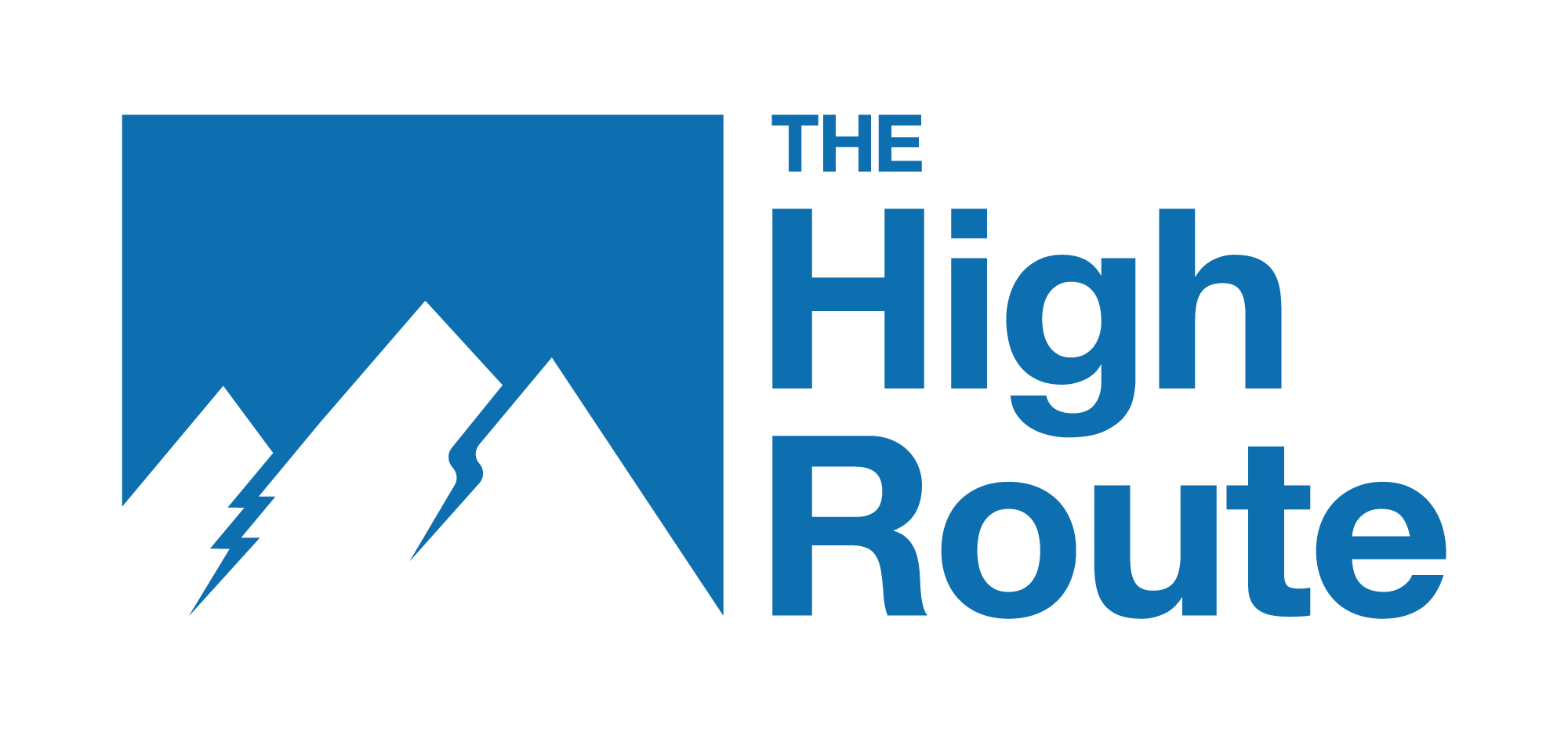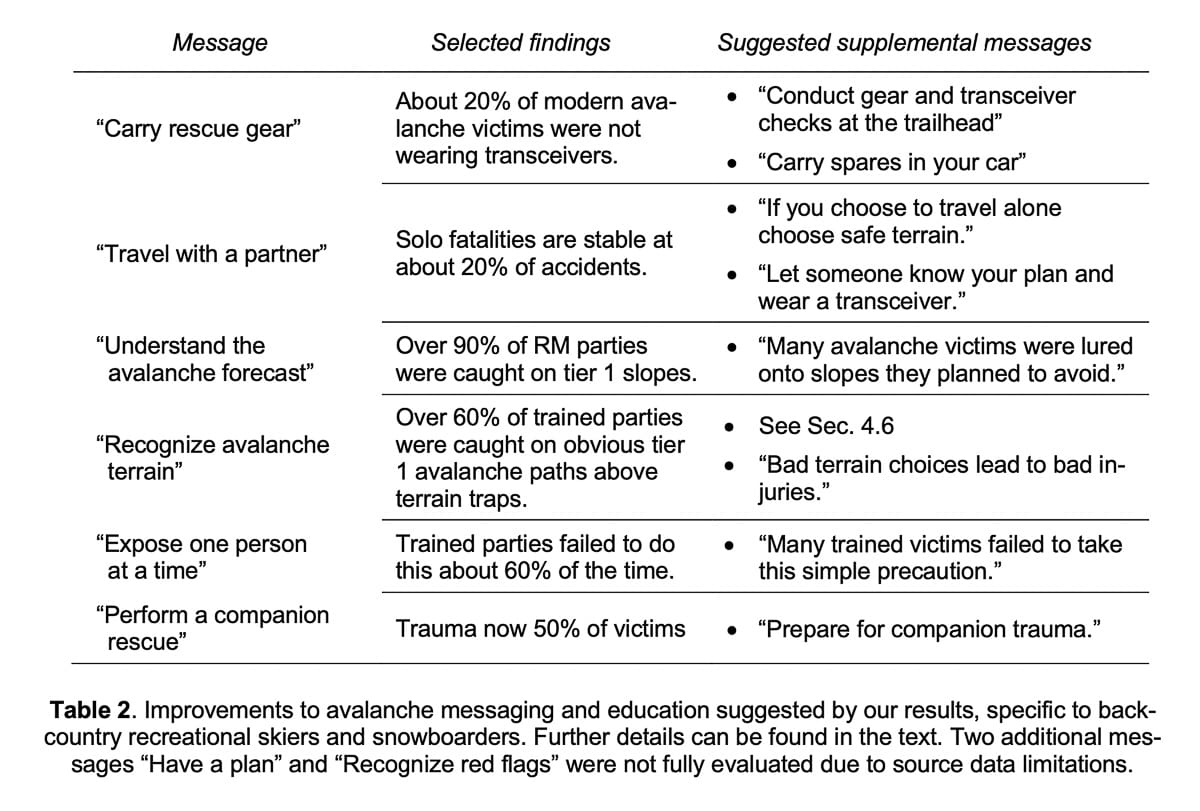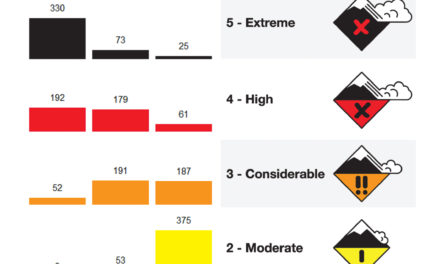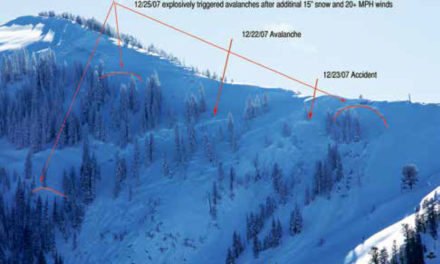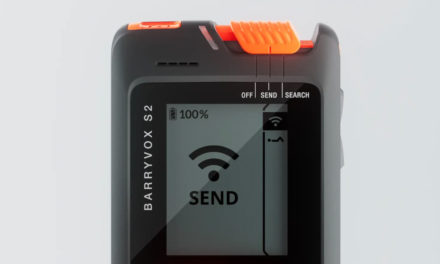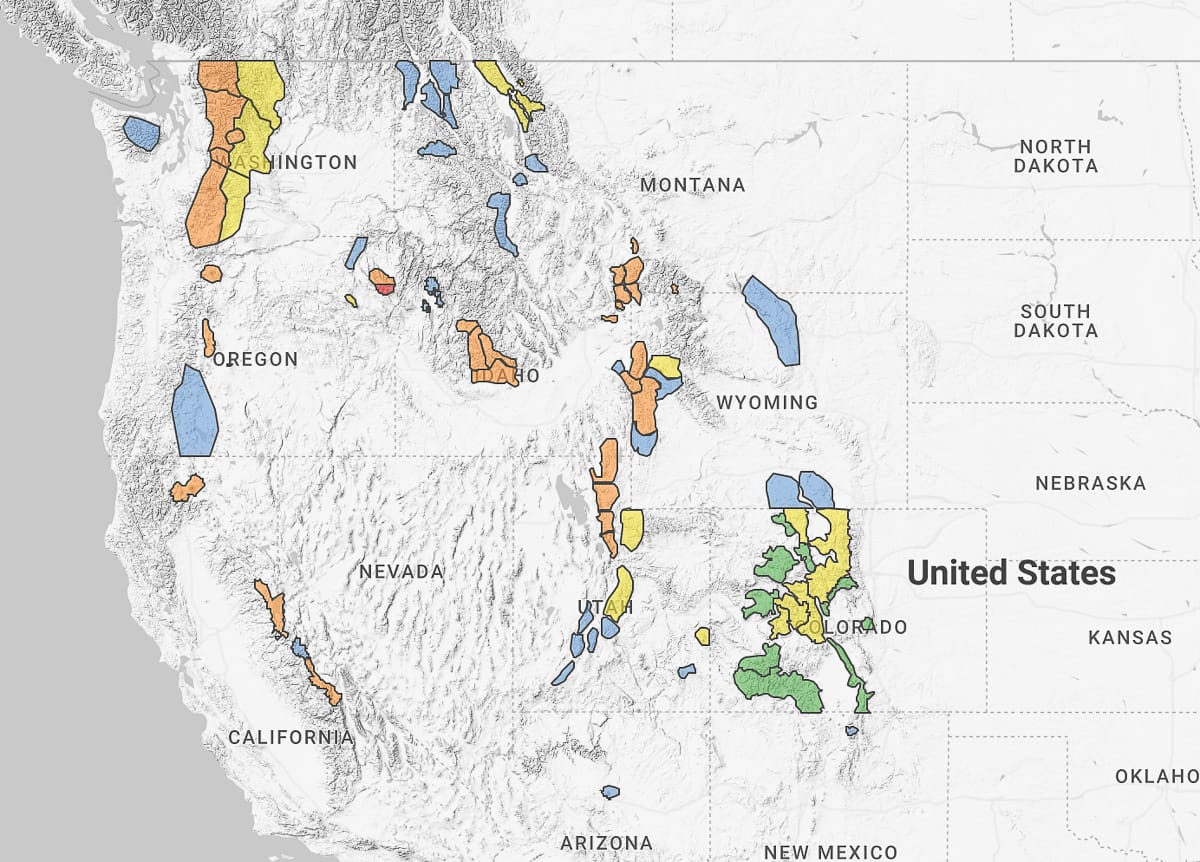
With many zones reflecting heightened avalanche danger, it’s time to think about risk management trends. avalanche.org screen grab 12/16/24
Managing risks is key regarding safe backcountry travel. As we head into winter, which means more snow and changing variables, let’s pause and reflect on some new research relating to risk management.
This fall, researchers Ian McCammon and Kelly McNeil presented an interesting paper at the 2024 ISSW titled “Risk Management Trends in U.S. Backcountry Accidents: Skiers and Snowboarders.” Before you scroll past, recreationalists can easily learn from and apply this type of research. While we won’t break down the study’s nuances, we will distill the findings into some salient points. The authors were motivated to discover how “avalanche education and safety messaging affect U.S. fatality rates” and “understand these effects and identify opportunities to improve safety messaging.”
We’ll aim to keep it simple and focus on the author’s outcomes so we can think about our best practices while traveling in and around avalanche terrain.
Let’s run through some definitions for terms used in the findings.
RM: The authors’ research applied a behavioral scale to “[categorize] accident parties by their proficiency in risk management.” RM is short for “risk managing” and designates groups/individuals that “were either reported to have some level of formal avalanche education, took deliberate steps to mitigate their exposure or exhibited some level of competence at companion rescue.”
Tier 1 Slope: This definer refers to a slope considered “most dangerous” according to the avalanche forecast relevant to the accident zone. To be clear, this type of slope designation is fluid, and on another day with dissimilar conditions, the same slope on which an incident occurred might have an altogether different rating.
The authors make some salient concluding remarks from their research. They are summarized below.
- General avalanche awareness, formal education, safety/technology, and forecast/safety messaging save lives.
- “skills gained through avalanche training may be enabling parties to access avalanche-prone terrain during periods of instability…”
- Failing to adhere to the “one at a time” rule.
- Overconfidence in risk-management skills.
